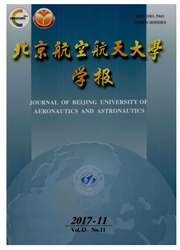

 中文摘要:
中文摘要:
为预测飞行员注意力分配情况,在混合熵最大化模型的基础上,从信息加工的两条通路入手,应用主观期望效能理论及SEEV(Salient—Expectancy—Effort—Value)模型思想,提出了一个基于信息重要度、发生概率、突显性及努力的预测模型.为验证模型的效庋,采用16名被试在不同任务权重及信息呈现方式下开展仪表监视实验,记录注视点分布作为注意力分配的评价指标.被试需要对平视显示器仿真界面中的目标信息状态进行监视,并通过按指定键对异常信息进行响应.实验结果表明:根据预测模型所计算的注意力分配理论值与被试注视点分布的实验值显著相关且吻合较好,可为飞机座舱显示界面的设计提供依据.
 英文摘要:
英文摘要:
To investigate pilot attention allocation, subjective expectancy utility theory and salient-expect- ancy-effort-value (SEEV) model were applied to establish a forecast model. Based on recent study, the model was consisted of information importance, occurring probability, salient and effort which represented for the both methods of information processing. In order to validate the model, 16 subjects performed an instrument supervision task under different priority and display usage conditions, and fixation distribution was recorded as evaluation index. The subjects were asked to monitor the information targets presented on the head-up display simulation interface and respond to abnormal information by pressing the corresponding button on the key- board. The experiment results revealed that the model accounted for 83% of the variance in visual attention al- location between conditions. The present study could provide ergonomics evidence with cockpit display inter- face design.
 同期刊论文项目
同期刊论文项目
 同项目期刊论文
同项目期刊论文
 期刊信息
期刊信息
